Table of Contents
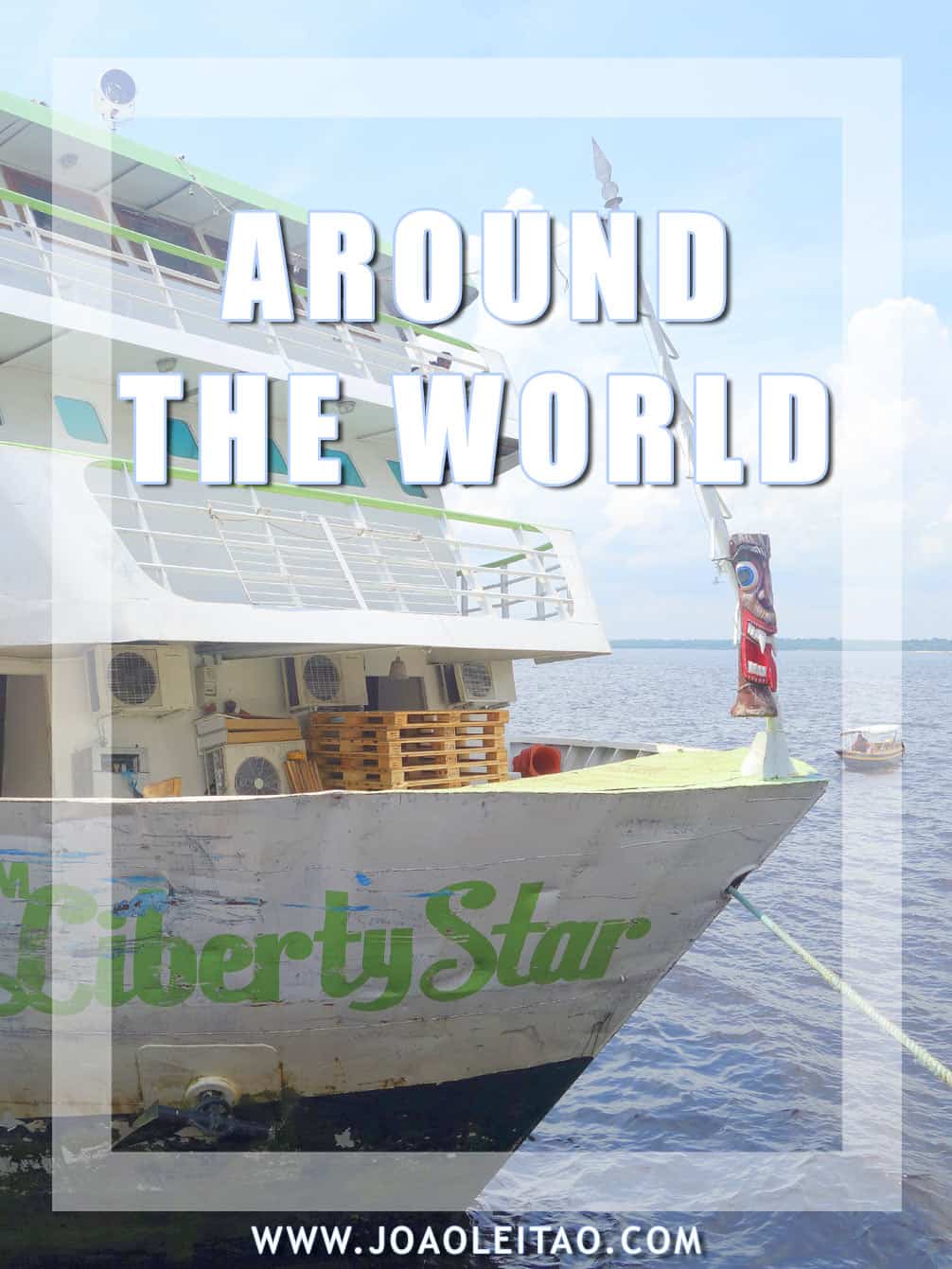
Earth is a big place and suggesting one route to travel around the world is nearly impracticable. Each traveler will yearn for different places and experiences. Budget, time, and means of transportation, all these variables will impact the plan.
Considering that planning an itinerary by yourself with only flights is simple, I decided to design an overland trip around the world without flying, going around the world to the west, departing from France. It won’t be too cheap nor too expensive. It won’t be too slow nor too fast. It will be balanced to be compatible with more people.
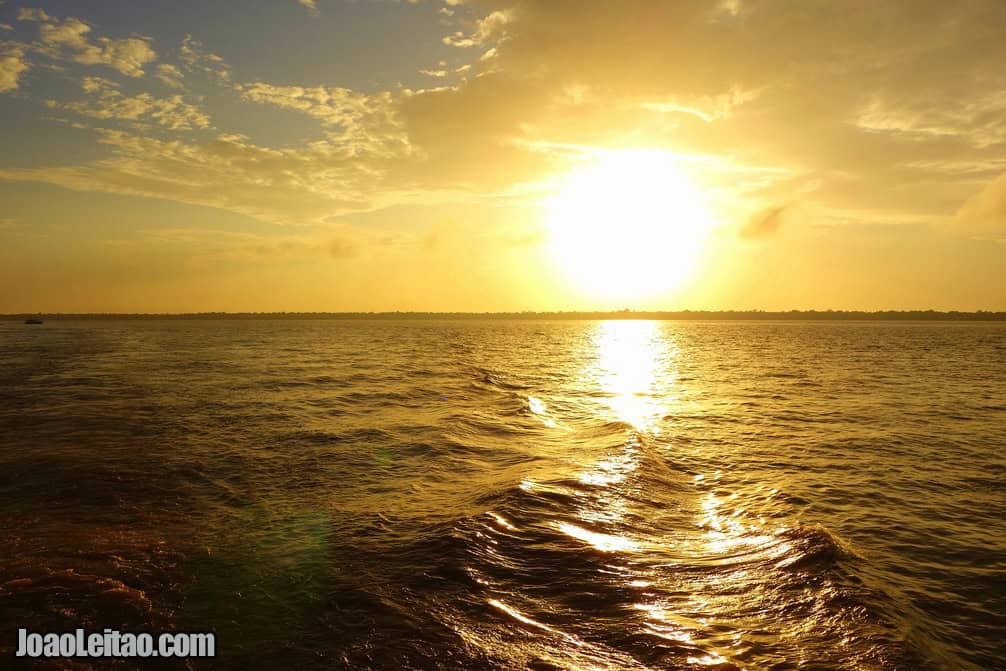
Around The World Without Flying
Stage 1 – From France to Brazil (Estimate: 20 days)
The goal is to reach South America without flying, so you’ll have to travel on a ship. For that, it’s better to go to Le Havre, in France, from where you’ll officially depart to your trip around the world. Lots of cargo ships leave from this port to all kinds of destinations.
Crossing the Atlantic takes about two weeks, and costs about 100 EURO a day. Ideally, you’ll want a ship that drops you off at the Brazilian port of Belém. There you can spend a couple of days resting and exploring after crossing the ocean.
To get inspiration for the next stage, you can stay at Hostel Amazónia, in the historic center, and research the best options on how to get a boat to Manaus. If you want something more private, try getting an apartment at Residencial Adam Lima.
Don’t miss out on the Ver-o-Peso market, dare to visit the Soledad cemetery, and try catching a show at Theatro da Paz.
Stage 2 – Up the Amazon, from Belém to Peru, via Manaus (Estimate: 35 days)
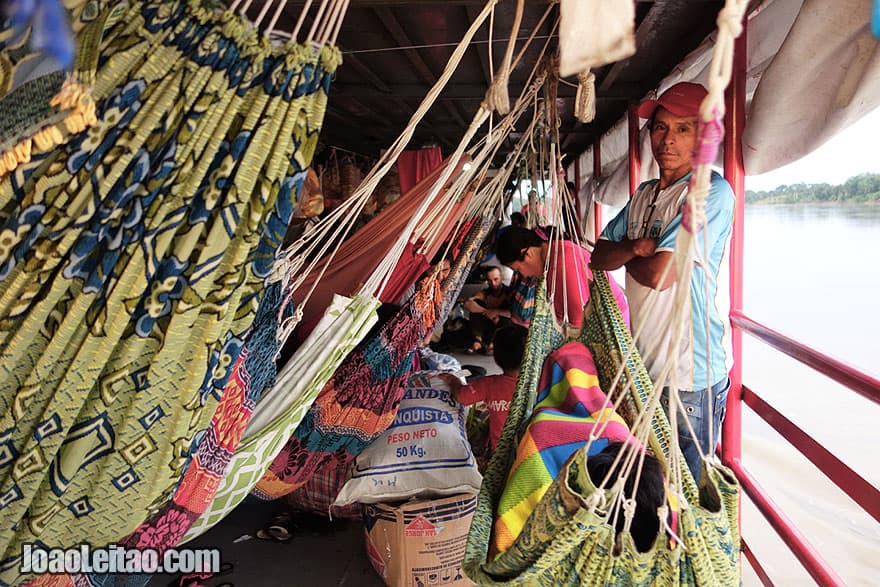
The Amazon crossing will be one of the most fascinating sections of your trip around the world without flying. Traveling the Amazon River by boat is done in stages, and involves switching ships a lot. Account for a least a couple of weeks to complete the route and don’t worry about a thing. You’ll sleep on a hammock that you’ll carry with you, the food onboard is included, and you’ll be able to buy whatever you need at one of the many stops along the way. I made the full Amazon boat crossing all the way to Ecuador, and I took me approximately 550 hours of boats during a few months of traveling.
Iquitos, in Peru, is the most significant urban cluster in the world without road access. You take a break from sailing here. It’s a unique, exotic, and fascinating city. You can visit the floating market in Belén or venture out on an expedition to the Amazon jungle. If you like butterflies don’t miss out on the sanctuary at Pilpintuwasi.
For 4 or 5 Eur you’ll get a bed at a hostel with breakfast included. Check out Green Track Hostel where for a little extra money you can get a private room with air conditioning, or Pousada Allpahuayo.
Reaching Lima takes another four days of sailing in the river, towards Pucallpa, where you can finally travel by land (it’s about 20 hours by bus) to the Peruvian capital city.
Recharge for a few days in Lima, the first large city you’ll come across after weeks and weeks of traveling. Find a place to stay like the distinctive Gran Hotel a quite affordable hostel, or Hostal Jose Luis at the pleasant Miraflores neighborhood.
Tour the historic center of Lima, classified as UNESCO World Heritage Site.
Enjoy the Plaza de Armas, the cathedral, the archbishop palace, the many excellent museums. When you’re done with Lima, it’s time to go on the second ocean crossing that every traveler around the world has to face: the Pacific.
Stage 3 – Peru to South Korea and Vladivostok (Estimate: 30 days)
To continue our journey around the world without flying, we now need to complete the next stage entirely at sea. Crossing the Pacific will take about 25 days and account for at least 3,000 Eur for this leg of the trip, on a freighter ship. There may be one or two stops along the way, but don’t count on that. It will be almost a month of boredom that you can use to write, edit photos, rest.
By the time you step on land again, you’ll be in a different world. Welcome to the Far East! Korea awaits you. The ship will probably reach Busan but if you find one that docks in Donghae that’s even better, and we’ll see why.
You can stay at the Kimchee Busan Guesthouse, with an excellent location and pleasant atmosphere, where a dorm bed costs under 10 Eur a night. If you want to pamper yourself, check out MS Hotel.
Enjoy your trip to South Korea. Explore Busan for a couple of days, there you’ll appreciate it after a month at sea. Visit the Beomeosa and Yonggungsa temples, don’t skip the Gamcheon Cultural Village – known as the Santorini of the East – a place where you won’t put your camera to rest. Get lost in the bustle of the Jagalchi fish market and visit the museums and the United Nations Cemetery, with the graves of the UN military who died during the Korean War.
You have a bunch of quality museums to visit, forests where you can get lost and enjoy nature’s tranquility, clean urban parks to relax. And when you’re ready to leave, catch a train to Donghae or, if you prefer, hop on a night bus.
Although Donghae is a small city, you can explore it before you leave on another sea trip, for 20 hours to Vladivostok.
Treat yourself to a little luxury and stay at the Meridien Hotel Donghae, where you’ll pay about 40 Eur for a room. Then go out and explore, enjoy your final hours in the East.
Visit the temples and the Confucian schools in Yongsan and Daongaehyanggyo, the historical village of Yakcheon, the Samhwasa temple. Catch the ferry to Vladivostok the next day.
Stage 4 – The Trans-Siberian from Vladivostok to Moscow (Estimate: 15 days)
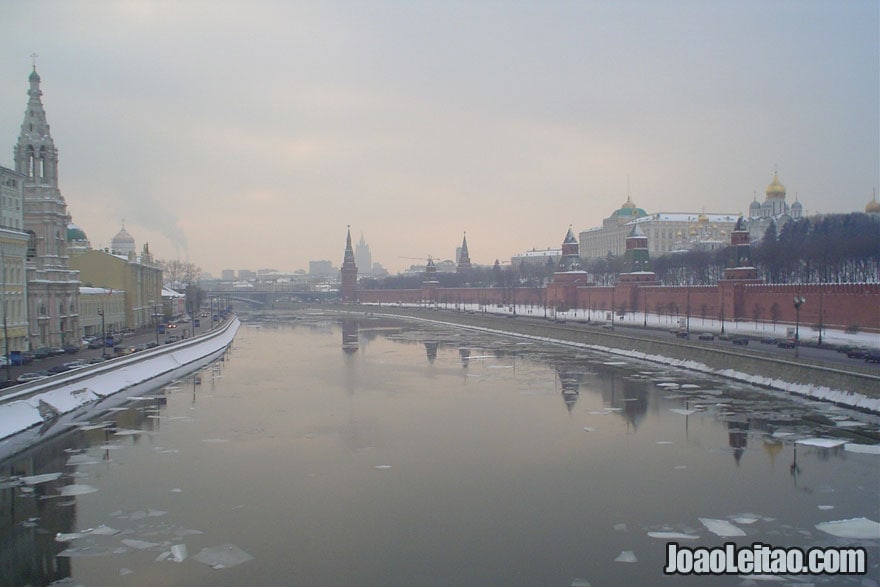
This is one of the longest train trips in the world. To successfully accomplish your around the world without flying, you have to do it. It’s 9,260 Km covered in six days without stops. But before hopping on the train, it only departures every two days anyway, take some time to explore the city.
Vladivostok is to many a border city, the last border control station of the vast Russian empire. Land of crude sailors, where winters are rough and vodka flows freely, Vladivostok is an important Russian naval base.
The main square – Ploschad Bortsov Revolutsy – is an excellent place to start wandering. You can go by the harbor, looking at all kinds of ships docked there. Visit the Vladivostok fort, Submarine C-56, and the regional history museum Arsenyev. Take it all in, you’re at a special place, at the connection between the Russian world and the far east.
I recommend staying at Optimum Hostel, which has great rates (7 Eur for a dorm bed or, if you want to spend more, 25 Eur for a private room) and is well located near the center and the train station.
Please note that the way you travel on the Trans-Siberian is up to you: you might want to go faster and reach Moscow in six days if you never get off the train. But you might choose to spend the night in some of the cities along the route, which will increase the price (about 600 Eur) but not by a lot.
The first stop happens on the second day of the trip. Most people haven’t heard about Khabarovsk, but it’s a beautiful city with a classic train station and a varied selection of museums that puts them on the list of the best museums east of Moscow: Railroad museum, Geological museum, city museum, regional, military, and art museums. The locals are strong nationalists, which may cause them to tease some foreigners, especially if they’re Asian or African.
Ulan Ude is the second stop after four days of traveling. A small city to visit and where you’ll find the biggest Lenin head in the world. You may wander around to stretch your legs and add an extra day to your Trans-Siberian trip. Visit the Revolution Square, the historic city center, a handful of museums, and an atmosphere that carries you back to the Soviet era.
Further down the road, you’ll reach Irkutsk on the same day. Here you can visit the magnificent orthodox monasteries of Knyaze-Vladimirsky and Znamensky, the ship-museum Angara, an ice breaker built in the early 20th century, and you can wander around paying attention to whatever you find. Museums, historic houses, the Philharmonic (I suggest you attend a show in the evening).
Enjoy the wooden houses, some still in use, that contrast with the soviet-looking concrete blocks.
On the 5th day, the train stops in three cities: Krasnoyarsk, Novosibirsk, and Omsk. The first one, with over one million people, is considered the most beautiful city in Siberia, and an excellent place for outdoor activities. Novosibirsk is the Siberian capital and the third biggest city in Russia, although it “only” has 1.5 million people.
The atmosphere is quite Soviet-style, with lots of monuments to the heroes of the Great Patriotic War (what Russia called the Second World War). If you like trains, there’s a considerable rail museum with over 90 locomotives and cars. If you have the chance, go to a traditional puppet show or the circus. Omsk, despite having a big population, it’s the least interesting of all three, and you’ll only stop here if you have a great interest in Russia.
The train reaches Yekaterinburg the next day. The fourth biggest city in Russia is located near the Ural Mountains that geographically separate Europe from Asia. The 1905 Square is the center of the town. You can visit the Chinese Market and the circus building by going to an extremely important historical site: the Church on the Blood, where Tsar Nicholas II and his family were executed by the revolutionaries on 17 July 1918, thus ending the Russian dynasty of Romanov.
At 7 a.m. of the seventh and final day of your Trans-Siberian trip, you’ll arrive at Nizhni Novgorod. Later, after lunch, you’ll reach Moscow, but if you’re not in a hurry, you can spend some time in this fascinating Russian city.
There’s a Kremlin with a church, an eternal flame, and a monument to the Soviet heroes of the Great Patriotic War. You can visit the house-museum where Gorky lived and Sakharov’s apartment-museum. There’s a decent photography museum and a prison-turned-museum Nizhegorodsky Ostrog. Visit the main square, Minin and Pozharsky, and the 19th-century exhibition grounds.
You’ll finally reach Moscow, the great Russian capital. You can stay here for a few days to recover from constantly moving around and to visit all the city has to offer.
Red Square is the main square in the city and a tourist’s most important point of interest. There you can visit Lenin’s mausoleum and Saint Basil’s Cathedral. Then you’ll have to visit the Kremlin and its palace.
The most important museums in Moscow are the Pushkin Museum and the Tretyakov Gallery. If you like to visit historical cemeteries, don’t miss out on the Novodevichy where you’ll find important people like Chekhov, Raisa Gorbachev, and Boris Yeltsin.
The Izmailovo Kremlin is not as famous, but it’s a real hidden gem. If you enjoy traces of the past, visit Bunker 42, an atomic weapon proof bunker that’s now a reminder of the Cold War. Wander the streets of Arbat (the old and the new) and Tverskaya. Some subway stations are a tourist attraction on their own, thanks to their classic décor. If you can only visit one, try Komsomolskaya.
In Moscow, stay at the Clever Hostel, in a relatively central area but very close to the subway network.
Stage 5 – From Moscow to Paris (Estimate: 20 days)
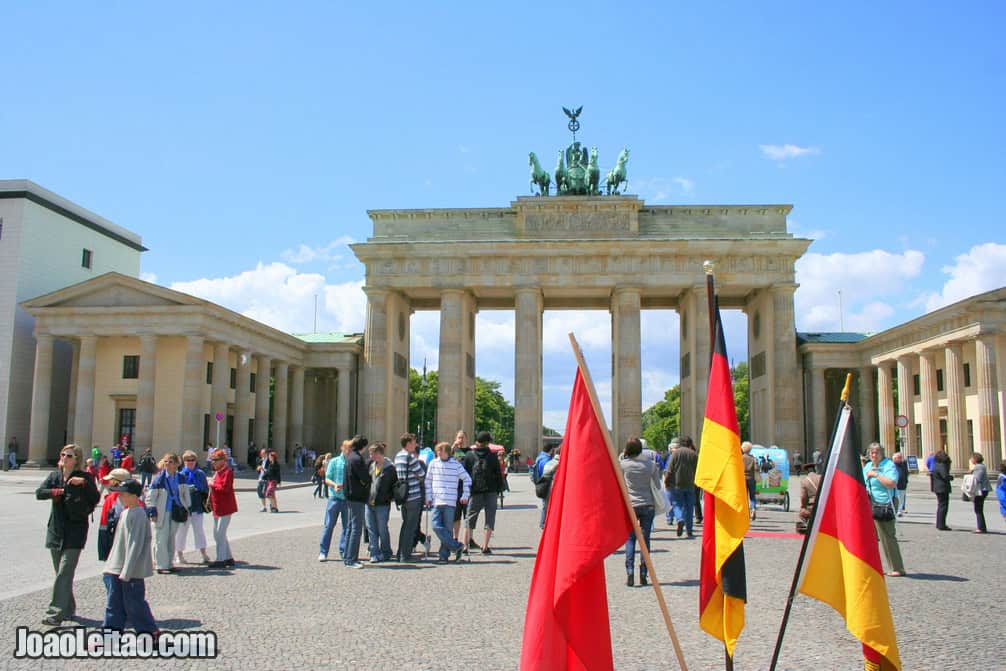
At this point in your trip around the world without flying, you’ll depart towards Western Europe from the Belorussky station. Just like in the previous stage, the traveler can choose to do it faster without ever getting off the train and reaching Paris in one day and a half, or do it slowly and explore the main cities on the route: Minsk, Brest, Warsaw, Berlin, and Strasbourg.
Please note that this train only departs once a week, on Wednesdays, so if you get off to visit something, you’ll have to wait another week to catch the train or combine alternative transportations.
The first stop is Minsk and getting a visa to Belarus can be a problem, although there are rumors that the country plans to be more open to tourism and abolish tourist visas.
The capital of Belarus is a charming city, a sort of massive museum of the Soviet Union, where KGB is still active and where large avenues and communist symbols carry us back to the times of the Cold War. Those avenues were in the process of becoming a UNESCO World Heritage Site, but the construction of modern buildings killed the application.
We have two accommodation suggestions for Minsk:
- If you prefer a more central location from where you can explore the old part of the city without using public transportation, stay at Revolucion Hostel;
- If you prefer something more comfortable, but from where you’ll have to catch the subway frequently, maybe the Flatcom Hostel is the right choice.
If you chose to visit Belarus, which is an excellent idea, take the domestic train to Brest, a city where you won’t need to stay much time but where you must visit the fortress that resisted a German attack during World War II. There you’ll find magnificent Soviet monuments and a warehouse of military supplies from those days, and more recent times.
From Brest, travel to Poland where you’ll reach Warsaw, where you can stay for a couple of days while you wait for the next express train Moscow – Paris, or just choose to catch trains that travel more regularly.
Although Warsaw’s historical center is not that old, it was rebuilt after the destruction during World War II, and it’s a fabulous must-see. Its main square looks like something off a fairy tale, and the streets around it are just delightful. In Warsaw, you can walk for miles and still find something interesting. City palaces, urban parks, fantastic graffiti. There are great museums and cafes. Do the Royal Route partially, to the Royal Palace Square (the full route is over 10 km long).
And then there’s the more modern part, but still classic, around the tower of the Palace of Culture and Science, a must-see landmark of the Soviet architecture in Warsaw.
If you cross the river and visit Prague (a neighborhood, not the capital of the Czech Republic), you’ll come across an extraordinary environment. Not that long ago, it was dangerous to wander around, and it was a sort of a slum. But today it’s different, and despite still being an impoverished area, it’s been gradually rehabilitated.
You’ll find a lot of accommodation options in Warsaw, but we’d like to suggest the Warsaw Downtown Hostel. Well located, affordable, and with a good range of rooms, it should be perfect for your stay.
Let’s depart to Berlin. It’s a relatively short train ride, a little over five hours and a half.
Even though Berlin doesn’t hold much of its historical splendor, because of the destruction it went through during World War II, it’s probably the European city with the most cultural events throughout the year.
You have to visit Mitte, a central neighborhood full of cafes and activities, where you can find a lot of museums and cultural venues.
You can stay here at, for example, the Heart of Gold Hostel Berlin, where a dorm bed costs only 14 Eur. For slightly better accommodation, Kurfürst am Kurfürstendamm is a good option.
If you want to stay in Berlin for longer, visit other areas in the city, like the East, which is very alternative and left-wing, where most ethnic minorities live.
We’re reaching the end of this adventure. The train trip from Berlin to Paris is about nine hours. The number of days the traveler plans for the City of Lights (named after it used electricity in the streets for the first time) is up to him, but there’s a lot to visit.
Stage 6 – From Paris to home (Estimate: 6 Days)

You’ll have three decisions to make. If you want to visit the French capital, stay at an affordable hostel, like Young and Happy Hostel & Budget Hotel and explore the city.
The best of Paris: The Eiffel Tower, the Arc de Triomphe, and the Notre Dame Cathedral explore the historic neighborhoods of Montmartre and Montparnasse, but also the picturesque ones like Belleville, where you’ll come across African and Asian minorities. I recommend a visit to the beautiful Père Lachaise cemetery, but the Montmartre cemetery is also gorgeous.
Walk along the shores of the Seine River and get carried away by your imagination. Visit the Bastille if you want, although there are no traces of the important fortress that marked the end of the monarchy during the French Revolution. Visit the magnificent museums, especially the famous Louvre.
If, on the other hand, you don’t feel like visiting the city, you can follow the strict plan and go to Le Havre from where your trip around the world started several months ago. In that case, you can share a ride on BlaBla Car.
In France, where public transportation is costly, sharing a ride is a great idea, and after your adventure, it shouldn’t be too hard to hitch a ride with someone who’s willing to listen to the story of someone who just returned from a trip around the world.
If you don’t feel the need to return to Le Havre after your around the world without flying, either catch a low-cost flight in Paris to your home country or take a train.
Also, check my Round The World Trip Ultimate Guide on the specific points:


